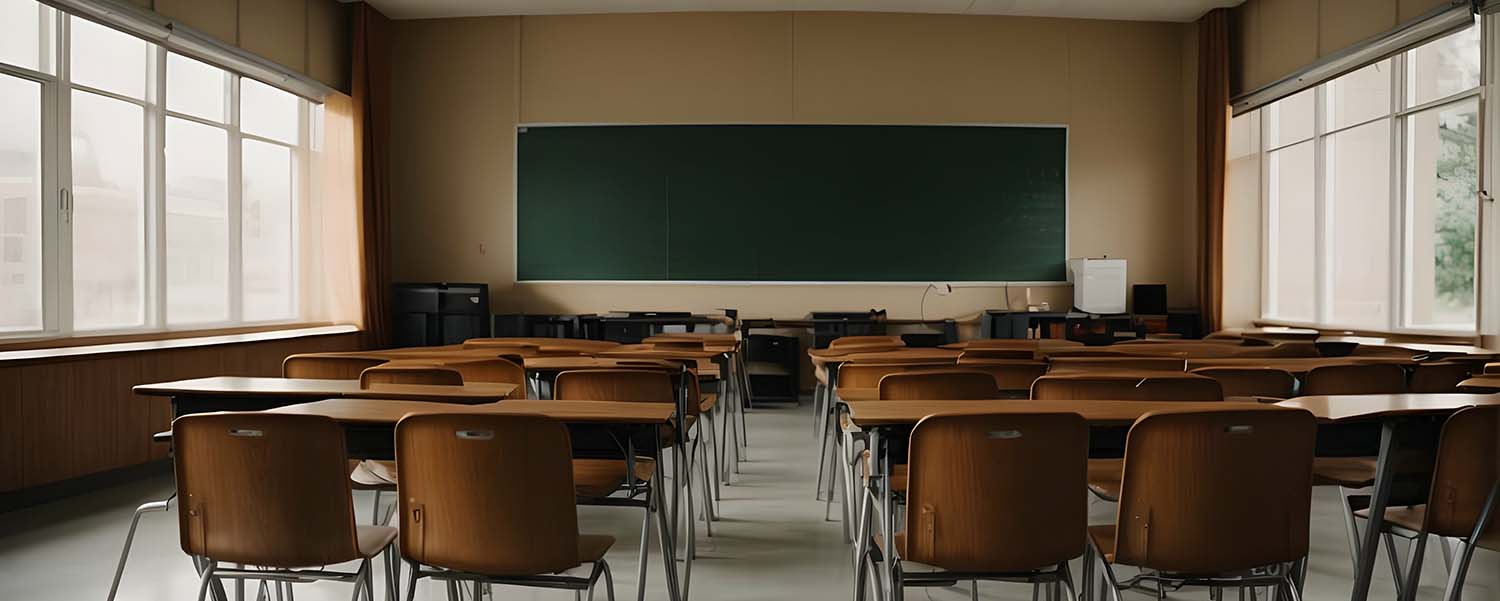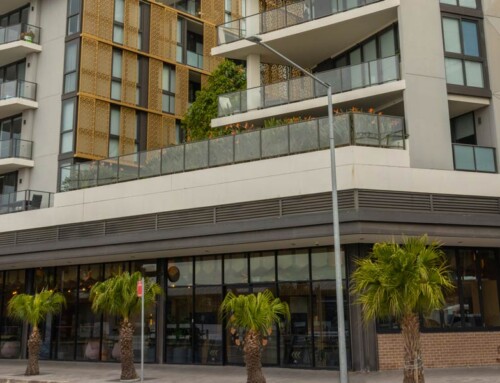Start the School Year Right

During the school year, a janitor’s cleaning and maintenance responsibilities are demanding and fast-paced. In the summer, cleaning professionals at schools and universities use this time to conduct detailed deep cleans and other maintenance overhauls that would otherwise disrupt normal school functions. Because of the decrease in foot traffic, summer is the optimal time for janitors to refresh the school and implement new cleaning programs to help them save time and money during the next school year.
Summer cleaning has become much more of a challenge than it used to be. With shorter summer vacations and more year-round activities, cleaning professionals have their hands full trying to complete their summer maintenance projects in just a few short months. This is why it is important for a school’s janitorial staff to build out a comprehensive summer cleaning program on top of their regular maintenance duties such as replacing lighting, painting, and other repairs.
If you haven’t already started, a good place to begin is by creating a color-coded checklist to designate specific cleaning procedures (stripping, refinishing, deep cleans) and the specific areas (gym, hallway, restroom, classroom) in which they are needed. By color-coding your projects, you can distinguish between the different types of maintenance needed in each area and develop a schedule for each task. Organizing cleaning and maintenance duties with colors is an easy way to stay on task to complete each project before the school year starts again.
To help you get a jump on your checklist, consider the following areas when building out your summer cleaning program:
Floors
- Hallways. Among the first things students, staff, and guests notice when walking into a school are the floors. In order to create a positive first impression, it is important to make sure they are properly maintained. Between scrubbing, stripping, and multiple recoats, school hallways are often one of the biggest and most time-consuming summer projects, so make sure you start early.
- Gym floors. One of the most heavily trafficked areas in a school is the gym floor. Between athletic events, assemblies, gym classes, concerts, and other performances, hundreds of people walk on these floors daily. Whether your gym floor surface is made of wood, synthetic material, or a resilient vinyl tile, proper annual maintenance is key to extending the life of your floor. After you have properly stripped and refinished the floor this summer, you might want to consider placing mats both outside and inside of the gym entrance, as well as the locker rooms, to maintain its finish; limit the amount of soil, mud, and water tracked in; and save time on cleaning throughout the year.
- Carpeted rooms. According to the Carpet and Rug Institute, properly maintained carpet can last up to 10 years or longer. In order to get the most out of your carpet, your school should consider a professional carpet deep clean to help restore floors to their original condition. This usually involves a high-pressure steam system and hot-water extraction method to remove the accumulation of deep-down soil and residue other cleaning methods leave behind. After the deep clean, you may want to apply a stain-resistant product to your carpets as an extra precaution for accidental spills and easer cleanup.
Properly maintained carpet also contributes to improved indoor air quality (IAQ) by acting like a trap, keeping particulates such as dust and allergens out of the air we breathe. To maintain fresh IAQ, ensure that carpet and matting are regularly laundered to remove captured debris.
Another way to improve IAQ is to schedule air conditioning coil deep cleaning services to remove the buildup and mold that accumulate in frequently used units. Air conditioning units that have not been properly maintained can cause odors, trigger allergies, and worsen existing asthma conditions.
- Matting. Schools without proper entrance matting will have a hard time keeping floors clean once the school year begins. According to ISSA data, facilities with foot traffic of up to 1,000 people per day will have approximately 24 pounds of soil tracked in during a 20-day period. Matting can reduce that number drastically. For example, six feet of matting at a facility’s entrance will remove 40 percent of soil, 12 feet of matting will remove 80 percent of soil, and 36 feet of matting will remove 99 percent of soil. Ultimately, you want to be sure your school has matting at each entrance and other major high-traffic areas to help maintain your floors. Matting also can improve IAQ by preventing particulates from being tracked into the building.
Restroom Refresh
- Deep cleans. While school is out, it’s a great time to deep clean your school’s restroom. Deep cleans typically involve sanitizing all bathroom surfaces with the use of a high-pressure chemical injection washer to remove soil buildup that regular mops and brushes cannot. This results in a fully sanitized restroom that not only looks and smells clean, but is clean. Professional deep cleans also can make day-to-day cleaning easier, resulting in time savings of up to 17 minutes per 500 square feet per week, according to ISSA’s 540 Cleaning Times.
- Upgrade. The summer months are also a good time to upgrade old restroom fixtures. If your school is interested in going green, many companies are creating designs using green products with 100 percent recycled materials as well as other features aimed at limiting waste and overuse. Another fun idea is to bring your school pride into the restroom with dispensers to match your school colors. This not only results in increased school spirit, but can increase the overall image of your school’s restroom.
To keep odor at a minimum, also consider using restroom fragrance products that attack odor in the air and at the source if you don’t already. Fragrance products such as urinal screens, air fresheners, and toilet sanitizers ensure restrooms maintain a fresh smell.
New Cleaning Programs
- Chemical Dispensing Units. When it comes to getting ready for your busy summer maintenance and cleaning projects ahead, consider upgrading to a new cleaning program instead of ordering more of the same supplies and wasteful ready-to-use cleaning products. Chemical dispensing systems are ideal for use in schools due to their hassle-free design and time-saving, one-step cleaning process. Most systems involve a broad-spectrum cleaning formula for most hard surfaces, and best of all, the systems are tied directly to the school’s water line, saving space and ensuring the correct dilution is used every time. Using a chemical dispensing unit compared to mixing chemicals to ensure proper dilution each time can save hours per week. These dispensing units also feature locked designs, so the only person who is able to unlock the chemical reservoir is the service professional―reducing the likelihood of misuse, accidents, and injuries.
Summer is a great time to implement a new chemical program due to the decrease in school visitors, allowing more time to establish a cleaning routine and conduct training. Identical chemical dispensing systems also can be set up in multiple locations throughout the school, or even district-wide. This will help provide consistent cleaning practices and results across schools, as well as save time on procedural trainings.
- Microfiber. Consider making the switch to microfiber wipes and mops. Microfiber cleaning tools offer effective cleaning and can control infection more than many traditional mops and towels. Microfiber products are proven to remove 99.9 percent of microbes and 80 percent more dust and dirt than traditional mops, leading to reduced cross-contamination and increased health benefits.
Patrick Peterson, Cintas Corp.’s 2013 Janitor of the Year, had this to say about how he works with his team to clean during the summer: “My staff and I work together to complete deep-cleaning tasks, and communication is the key for us to make it happen. We schedule our plans weeks in advance to make sure we are all on the right track and all have the same goals in mind. Our hope is that all our hard work will last a little while, or at least until the next break.”
Once you have completed your summer cleaning program checklist and all the items on it, take a deep breath. You soon will start a new school year and continue the cycle of keeping your school clean, safe, and a place that students and staff want to be and where parents want to send their children.

















